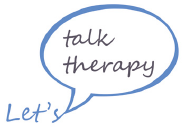When interacting with children we often find ourselves asking lots of questions e.g., “What’s teddy doing?” “How many cats are there?” This type of testing has its place during assessment, but it’s really important that we don’t do this when teaching new skills. Modelling is where we use lots of language which we would like the child to pick up on and learn; the quality and quantity of this is also important to consider and language must be modelled within a variety of contexts.
Why do we need testing?
When teaching children a new skill, testing can be helpful to check what a child is understanding as part of the learning process and asking questions is part of this. However, modelling must take priority when teaching, and that without modelling language all day every day, children with language difficulties will struggle to learn the language they need to access the curriculum.
What is modelling & why is it useful?
Modelling is essentially taking the time to give children the language they need, with an emphasis on avoiding questions and a “repeat after me” style of communication. When we model language, the child gets to hear the words used many times over. Children require a lot of exposure to new words before they fully understand them, and subsequently use them in their own language.
Modelling; Key Strategies
- Repeating – say the language again, in an accurate and grammatically correct way
- Emphasising – place emphasis on key words you wish the child to learn
- Expanding – add words to their sentences to make them longer
- Provide a running commentary – comment on what the child is doing, focus on quantity of words used, but also quality, using a wide range of words
How do typically developing children learn new words?
A typically developing child will pick up 6-8 words per day throughout their years at school, to reach the average adult vocabulary of 30,000. They learn these words by simply hearing them being used by other people on a regular basis. No special effort is made to teach these words. The child hears the adult model, stores it in their own vocabulary, and uses it appropriately again later. All children benefit from adults providing lots of exposure to new words, hearing a wide range of words, and having meaningful conversations which allow a balance of listening, waiting and responding.
How do children with language difficulties learn new words?
Current evidence from the Royal College of Speech and Language Therapists suggests that ‘language disorder of any kind affects nearly 1 in 10 children’ suggesting at least 2 children in a class of 30 will have language difficulties.
Children with language difficulties often enter school with fewer words than their peers, in turn they must learn at a much faster rate to reach the average adult target of 30,000 words. To bridge this gap, children need to be explicitly taught vocabulary preferably on a 1:1 basis or in small groups and have lots of opportunities to hear this vocabulary within their daily routine.
We cannot stress enough the importance of visuals and non-verbal communication when teaching language to provide the child with a lasting reference to the words they need to use and learn.
Children need 12 different exposures of a word before they can store it and use it correctly. E.g., read about a ‘tiger’, sing about a ‘tiger’, play with a toy ‘tiger’, visit the zoo to see a ‘tiger’, colour in a ‘tiger’, pretend to be a ‘tiger’…. A child with a language difficulty needs 24 – 36 exposures of a word before they can store it and use it correctly. (Parsons and Branagan, 2017)
If you were placed in a foreign country, where you didn’t speak the language and everyone asked you questions, you wouldn’t learn any new vocabulary.
If others labelled items and showed you these in different contexts, you would soon pick up the vocabulary.
Strategies for a communication friendly setting
- Use word mats for key topic vocabulary
- Place key words for subjects onto a word wall
- Pre-teach vocabulary
- Use a multisensory approach to teach new words
- Use symbols around the school to identify key places and people
- Train staff in visual approaches such as Makaton
Specific strategies for pupils with SLCN
- Use simple sentence structures
- Rephrase what you have said
- Give instructions on 1:1 basis
- Give a task planner
- Avoid non-specific words such as ‘this, that, is’
- Get the child to repeat a task back to you
- Give the child time to respond
- Offer choices to answers
- Can you turn your question into a comment?

Talk Therapy provide Independent Speech Therapy services to schools in the Midlands. We are positive professionals who believe in working in partnership with our schools.
Email: louise.talktherapy@gmail.com | Instagram: @letstalktherapyuk
Please login to view this content
Login